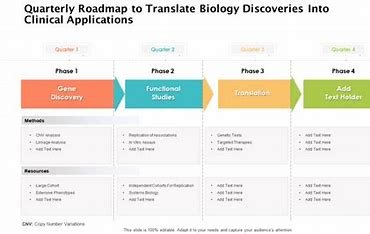Learn how to build an effective roadmap for clinical trials and development. Explore key strategies, regulatory insights, and patient recruitment techniques with BioBoston Consulting.
Embarking on turney of clinical trials and product development is a critical and complex phase for any biotech company. Whether you are developing a novel therapeutic or medical device, building a structured roadmap for clinical trials is essential to ensure timely progress, regulatory compliance, and successful market entry. At BioBoston Consulting, we specialize in helping biotech companies navigate this intricate process.
In this article, we will break down the key steps in creating a clinical trial roadmap, from preclinical stages through to post-market surveillance. We will also explore how BioBoston Consulting can help you optimize your clinical trial strategy and ensure your project meets regulatory standards.
1. Understanding the Clinical Trial Lifecycle
The clinical trial process is a multi-step journey that involves a series of regulated phases aimed at testing the safety and efficacy of a product. Understanding these phases and their significance is the first step in building your roadmap.
Key Phases in Clinical Trials:
- Preclinical Phase: Involves lab testing and animal studies to assess safety and biological activity.
- Phase I: Focuses on safety and dosage, typically involving a small group of healthy volunteers.
- Phase II: Tests the efficacy of the treatment in a larger group of people with the disease or condition.
- Phase III: Involves large-scale testing to confirm the effectiveness and monitor adverse reactions.
- Phase IV: Post-market surveillance to track long-term effects and additional data once the product is on the market.
By understanding the unique goals of each phase, you can begin developing a comprehensive clinical trial roadmap tailored to your product.
2. Designing a Clinical Trial Strategy: Key Considerations
Developing a solid clinical trial strategy is crucial for success. There are several factors to consider when designing your roadmap, including study design, patient recruitment, and regulatory requirements. The right strategy will help streamline your clinical trial process, reduce delays, and mitigate risks.
Essential Elements of a Clinical Trial Strategy:
- Study Design: Decide whether your trial will be randomized, blinded, controlled, or open label based on the scientific objectives.
- Inclusion and Exclusion Criteria: Clearly define the target population and the criteria for patient enrollment.
- Endpoints and Outcomes: Identify primary and secondary endpoints that will demonstrate the product’s efficacy.
- Regulatory Compliance: Ensure adherence to regulatory guidelines such as FDA, EMA, and ICH.
By carefully designing each element of your clinical trial strategy, you will set yourself up for a smoother execution of the trial.
3. Navigating Regulatory Requirements and Approvals
One of the most complex aspects of clinical trials is ensuring compliance with regulatory authorities. In order to conduct a clinical trial, your company must submit an Investigational New Drug (IND) application or its equivalent, depending on the product type, to obtain approval from regulatory bodies such as the FDA or European Medicines Agency (EMA).
Key Regulatory Considerations:
- Good Clinical Practice (GCP): Follow internationally recognized guidelines to ensure that the clinical trial is scientifically valid and ethical.
- Ethics Committees and Institutional Review Boards (IRB): Obtain approval from relevant boards to ensure patient safety and informed consent.
- Regulatory Submissions: Timely submission of documents like clinical trial protocols, informed consent forms, and investigator brochures is critical to avoid delays.
Ensuring compliance from the beginning of your clinical trial process will prevent setbacks and ensure that your trial proceeds smoothly.
4. Patient Recruitment and Retention: A Critical Element
Successful patient recruitment and retention strategies are vital for keeping clinical trials on track. Recruitment delays are one of the primary reasons clinical trials fail to meet timelines. A well-designed recruitment strategy will ensure that your trial stays on schedule and your data is robust.
Effective Patient Recruitment and Retention Strategies:
- Early Community Engagement: Engage potential patients early by creating awareness in relevant patient populations and healthcare professionals.
- Incentives and Support: Offer incentives and provide comprehensive support to patients throughout the study, including transportation, accommodation, and educational resources.
- Utilizing Technology: Leverage digital tools, such as social media campaigns, clinical trial registries, and patient portals, to enhance patient enrollment.
An effective recruitment and retention plan can significantly impact the success of your clinical trial and help maintain consistent progress.
5. How BioBoston Consulting Can Optimize Your Clinical Trial Roadmap
At BioBoston Consulting, we specialize in supporting biotech companies through the clinical trial process. Our team can assist you at every stage—from the initial design of your clinical trial strategy to navigating the complex regulatory landscape and optimizing patient recruitment.
How We Can Help:
- Clinical Trial Strategy: We help design a tailored roadmap for clinical trials, ensuring that all phases are aligned with regulatory requirements and business objectives.
- Regulatory Support: We guide you through the regulatory approval process, helping you secure IND and other necessary approvals from regulatory bodies.
- Risk Mitigation: With our deep industry knowledge, we help mitigate risks by ensuring compliance with GCP, ICH, and other regulatory standards.
- Patient Recruitment: We assist in developing strategies for successful patient recruitment and retention, using proven methods and cutting-edge technology.
With our expertise, BioBoston Consulting can make your clinical trial process more efficient, reducing the time to market and improving the chances of a successful outcome.
6. Conclusion: Build Your Clinical Trial Roadmap with BioBoston Consulting
Building a clinical trial roadmap is crucial for the success of your biotech product. From the preclinical phase through to post-market surveillance, every stage must be meticulously planned and executed. At BioBoston Consulting we specialize in guiding biotech startups and established companies through this complex process.
Ready to build a comprehensive clinical trial roadmap for your biotech venture? Contact BioBoston Consulting today to discuss how we can assist you in designing a winning strategy, ensuring regulatory compliance, and optimizing patient recruitment for a smoother clinical trial journey.


